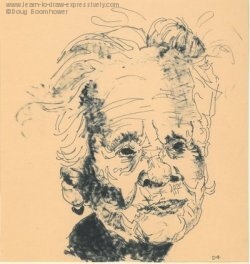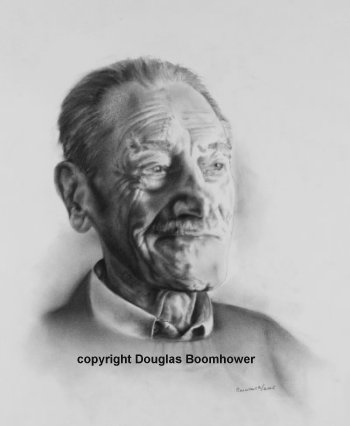Drawing Technique
...based on line drawings and realism
My drawing technique is based on realism and the basics of line drawing. Learning how to use contour lines and gesture lines when drawing will teach you what is commonly referred to as eye-hand coordination. This means you let your eye guide your hand. It is the key to drawing exciting and expressive line drawings. Let me explain...
Suppose you are drawing but you are spending most of your time looking at your drawing paper rather than looking at the object being drawn.
What is happening is that you are watching your hand create what you THINK are pleasing lines rather than looking at the object you are drawing. In this case, your hand is guiding your eye instead of your eye guiding your hand ... the most common problem for beginning artists.
You must learn to do just the opposite and let your eye guide your hand if you want to draw artistic lines.
As difficult as it may seem at first, force yourself not to look at your drawing paper. Keep your eyes on the still life object or model you are drawing and let your hand follow what you see.
To illustrate this drawing technique, here are some nude drawings I did while in University. Imagine that your eye is actually pulling the pencil across the paper, in other words your eye is guiding your hand.

The lines that come out will inevitably be either contour lines or gesture lines. Only when you do this, will you be faithfully recording what you see. Also, you will develop your own style without even consciously thinking about it because we all see things in our own unique way.
At this point, don’t even worry about what your drawings look like. The importance is the process of learning to let your hand simply follow what your eye sees. In a sense, you are freeing your hand from previously learned expectations.
Here is a humorous "before and after" example of learning to draw with artistic expression. Only when your hand is free can it create free and expressive line drawings.

Because this method of drawing art may be new to you, you may find it challenging at first, but stick with it! Be concerned only with following this process and your drawings will naturally develop.
Once you become used to the drawing technique, then allow yourself to occasionally glance at your paper in order to get your bearings.
With time and practise, contour and gesture lines will become so ingrained in you that you will be able to divide your concentration between your model and your art paper.
This is the stage you want to reach because then you can concentrate on your drawing while at the same time never losing site of faithfully recording what you see.
Drawing Technique - Simple to Elaborate
The degree to which I enhance my drawings varies from the simple line drawing, to textured drawings (using light and shade), to charcoal drawings which are so elaborately enhanced that they look like black and white "paintings". In the latter case, I see things in areas of light and dark much like a painter.

The immediate simplicity of the pencil affords me the ability to create spontaneously lifelike portraits.
I often use the pencil on portraits of older people because it is conducive to creating soft, smooth drawings.
As in all my portraits, I achieve a strong likeness of my model, but I often smooth out the wrinkles in older faces.
I often use charcoal for dramatic drawings. The power achieved in many of my jazz portraits comes from the strong black lines and heavy black tones provided through the use of charcoal. Click here for a charcoal lesson. My pet portraits have color in them. In these cases coloured pastel was combined with charcoal.
All of my ink drawings are clearly based on the spontaneity of the correctly drawn line. They are combined with ink-washes, which vary in degree of grey tones. An ink wash is created by dipping a brush into black India ink and then mixing the brush with water before applying it to the paper.
My watercolors were approached with the same spontaneous attitude with which I approached my ink washes.




